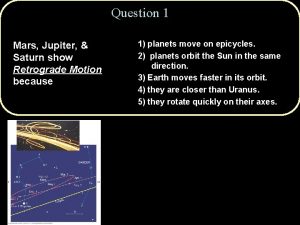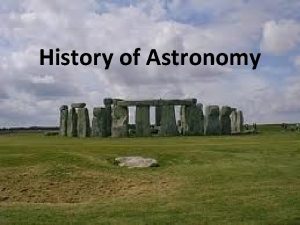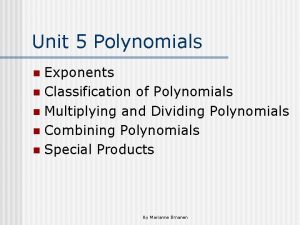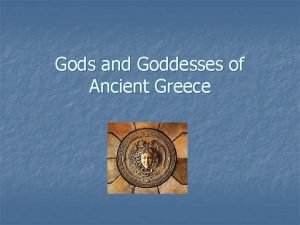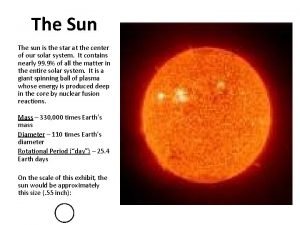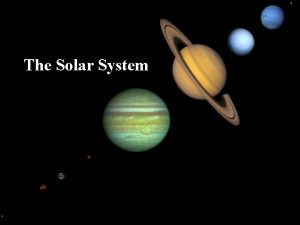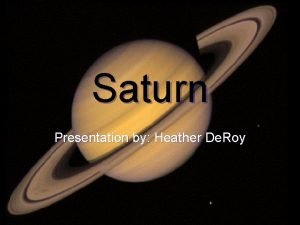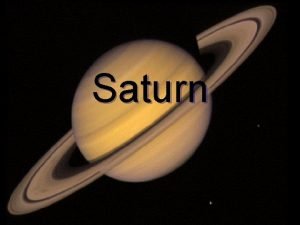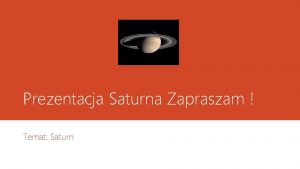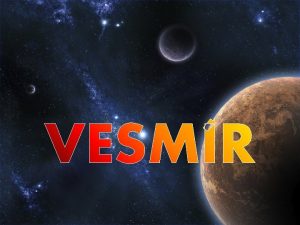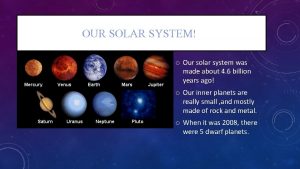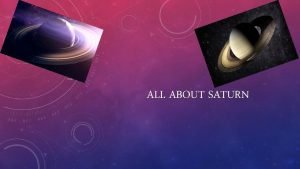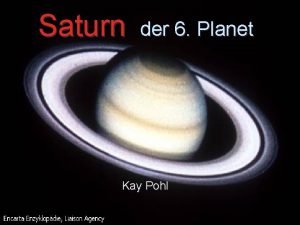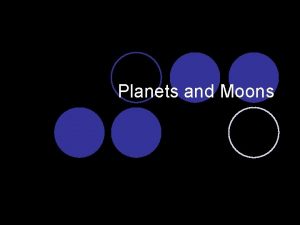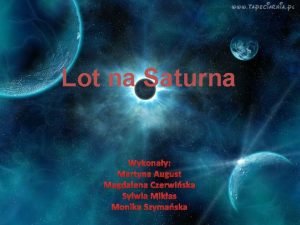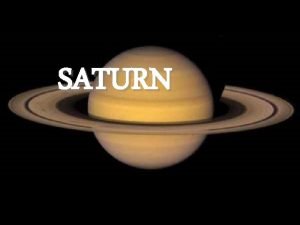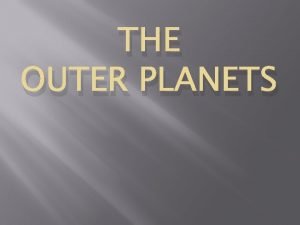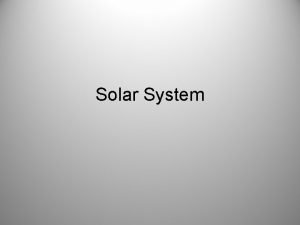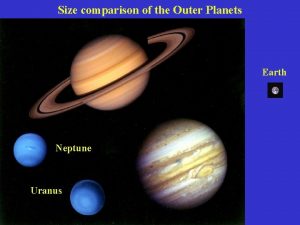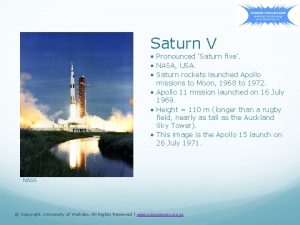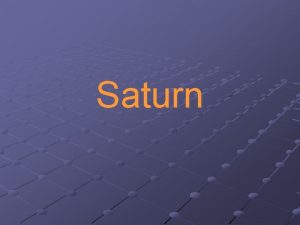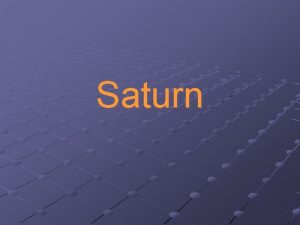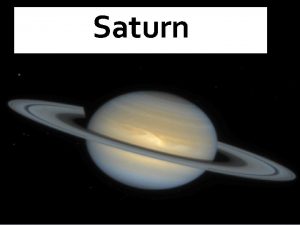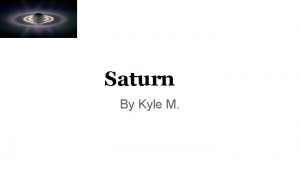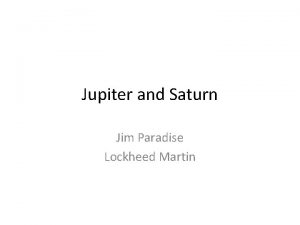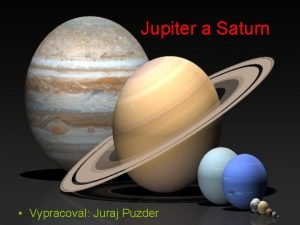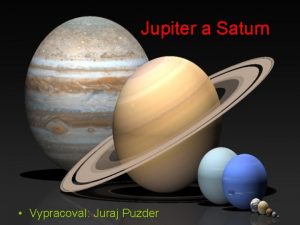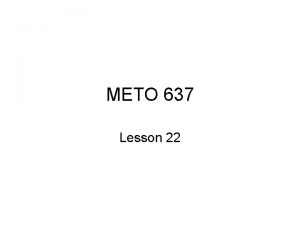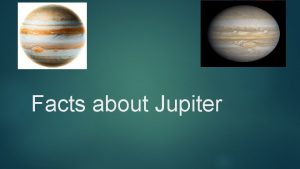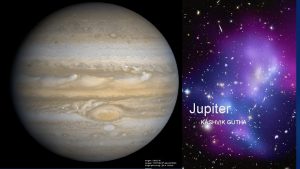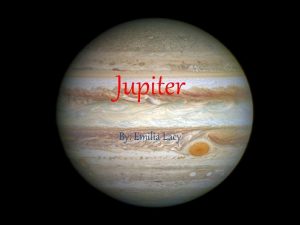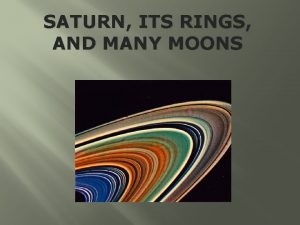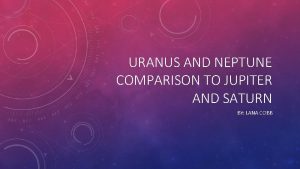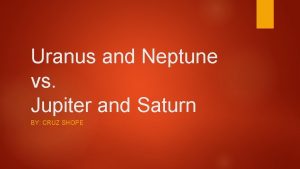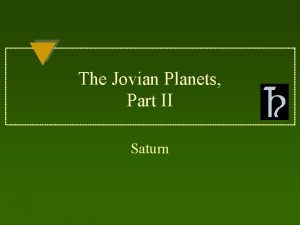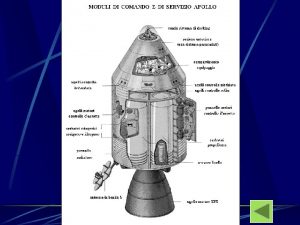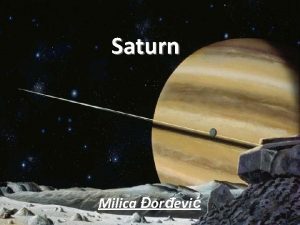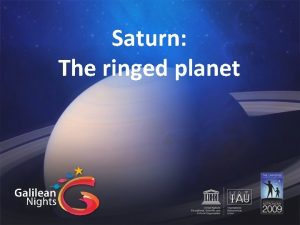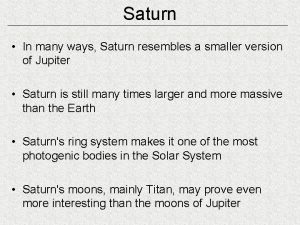Inside Jupiter and Saturn From last time learned

























- Slides: 25

Inside Jupiter and Saturn

From last time learned that Jupiter and Saturn are primarily made of hydrogen and helium. But what form or phase? Gaseous like the form we are used to, or something else?

The interior structure of Jupiter (and Saturn)

Liquid metallic hydrogen was produced in a physics laboratory for the first time in 1996. To produce it requires pressures of about 2 -3 million atmospheres (about 200 -300 billion Pascals). Even in specialized laboratories, it is difficult to achieve these pressures for more than a microsecond. Fact that the interiors of Jupiter and Saturn are conductors mean they can (and do) carry large electrical currents and generate magnetic fields

Magnetospheres 1: the Earth and the Van Allen Belts

Magnetospheres 2: the magnetosphere of Jupiter “dipole moment” of Jupiter 20, 000 times that of Earth

Another manifestation of Jupiter’s magnetism: auroral regions

University of Iowa connection…plasma waves and radio waves with the Voyager spacecraft

Plasma…the “fourth state of matter”

Sounds from the Voyager encounter with the Jovian bow shock University of Iowa space plasma waves

Saturn also has a liquid metallic interior and rotates rapidly. It also has a magnetosphere. (“dipole moment” 560 times Earth). The University of Iowa experiment aboard the Cassini spacecraft has measured waves traveling in the ionized gas of the Saturnian magnetosphere. plasma waves from the University of Iowa instrument on Cassini

Are Jupiter and Saturn planets or stars? Jupiter emits 70% more radiation to space than it receives from the Sun. It has an “engine” inside

Saturn and its ring

Recall basic facts about Saturn • Further from the Sun than Jupiter (a =9. 54 au) • Systematically colder as a result • 95 Earth masses • Diameter 9. 5 times that of Earth • Like Jupiter, only less extreme

Most unique feature of Saturn: the ring (1) What are its properties? (2) How did it get there?

The size and structure of Saturn’s ring The ring extends out to about 2. 4 Saturnian radii, And is composed of 3 main rings and a prominent gapap

The appearance of Saturn’s ring changes during its 29 year period The ring is in Saturn’s orbital plane. The obliquity of Saturn is 26. 7 degrees.

How would you determine the current tilt of Saturn’s ring? Do we see them edge-on, or fully opened up? Use JPL solar system simulator, or look through a telescope

The near-disappearance of Saturn’s rings when they are edge-on indicates that they must be very thin. Hubble Space Telescope Observation of Saturn In 1995 when ring was edge on

The nature of Saturn’s ring • Maxwell (yep, the same one) proved on the basis of physical arguments in 1859 that the ring could not be a solid, orbiting disk • It must be composed of billions and billions of little moonlets, each orbiting Saturn

The Cassini spacecraft at its first approach to Saturn, summer 2004

A close-up view for a space traveler

Data from University of Iowa radio receiver on Cassini demonstrates that Saturn’s ring consists of particles, many of them very small Radio static from Saturn Ring crossing In one of its orbits, Cassini passed through the outer part of the ring. Each impact of a dust particle produced a blip of radio static

How were the rings of Saturn formed? Why does Saturn have them?

The existence of Saturn’s ring due to “tidal disruption” • Tidal “stresses” due to a difference of the gravitational force on the front and rear side of a moon near a planet. • If a moon gets closer to a planet than about 2. 4 planetary radii, the tidal stresses pull the moon apart • In case of Saturn, a moon probably moved within the “tidal disruption radius” and was torn to rubble.
 Mars, jupiter, and saturn show retrograde motion because
Mars, jupiter, and saturn show retrograde motion because Stonehenge planetary orbits
Stonehenge planetary orbits Jupiter and saturn are noticeably oblate because:
Jupiter and saturn are noticeably oblate because: Jupiter saturn uran neptun
Jupiter saturn uran neptun Foil math
Foil math Elapsed time
Elapsed time Zeus siblings
Zeus siblings Romeo and juliet globe theatre
Romeo and juliet globe theatre Uranus distance from sun
Uranus distance from sun Saturn characteristics
Saturn characteristics How many days are in saturn's year
How many days are in saturn's year Saturn presentation
Saturn presentation Cathal kelly
Cathal kelly : l
: l Saturn prezentacja
Saturn prezentacja Saturn prezentace
Saturn prezentace Saturn 4 billion years ago
Saturn 4 billion years ago Saturn facts
Saturn facts Besonderheiten saturn
Besonderheiten saturn Unique feature of uranus
Unique feature of uranus Saturn.lot.pl
Saturn.lot.pl Why does saturn have rings
Why does saturn have rings Saturnsaturn
Saturnsaturn Characteristics of outer planets
Characteristics of outer planets The solar system consists of
The solar system consists of Neptune size comparison
Neptune size comparison
